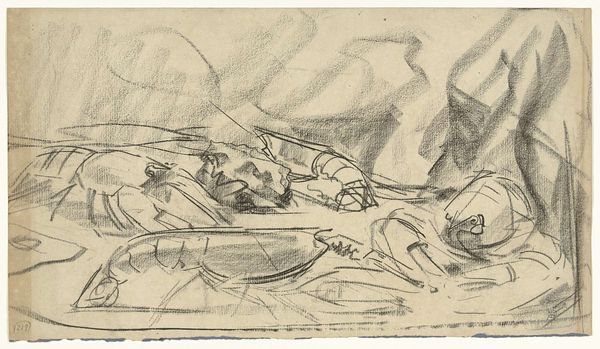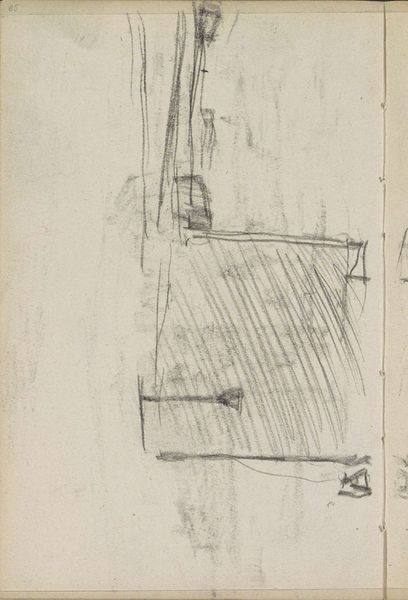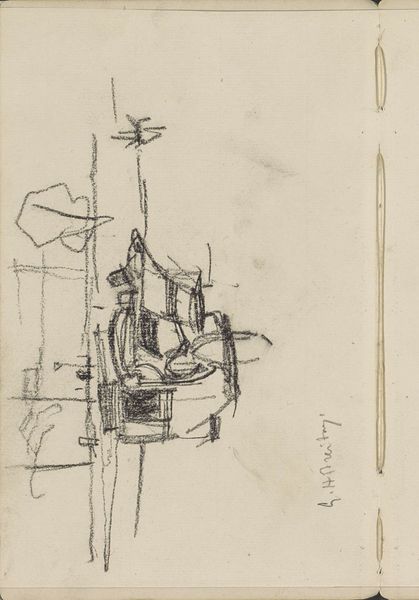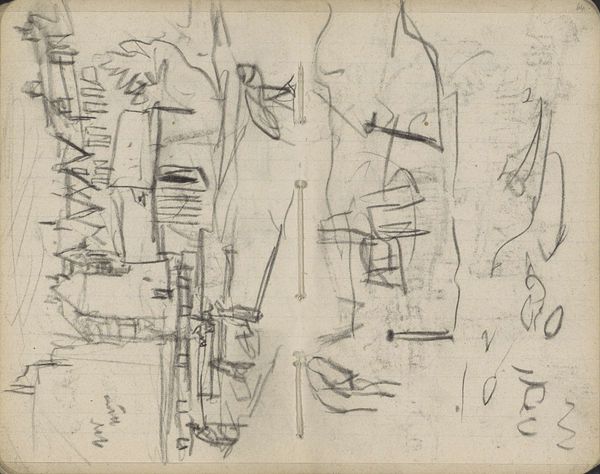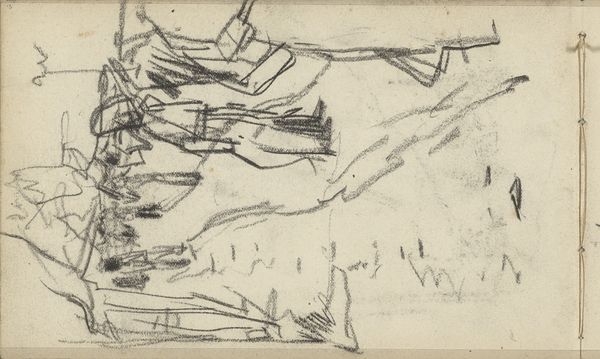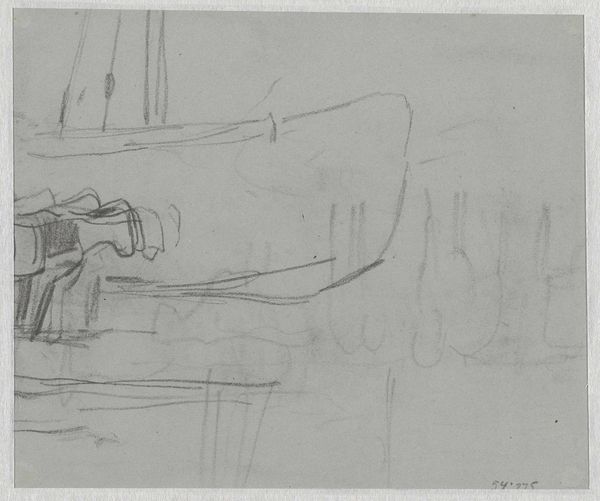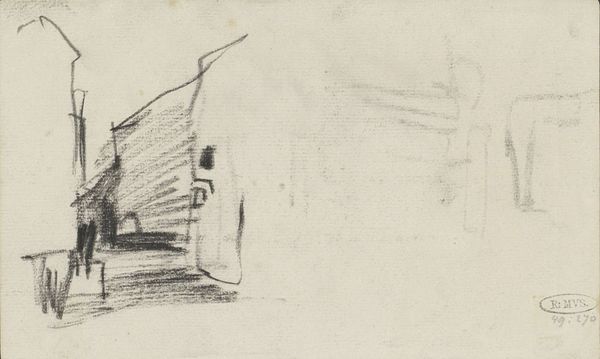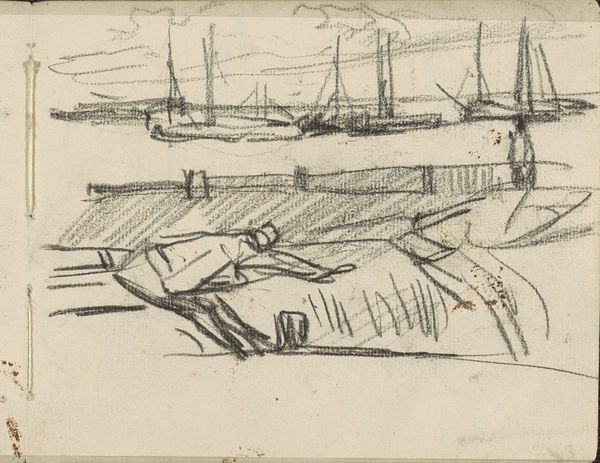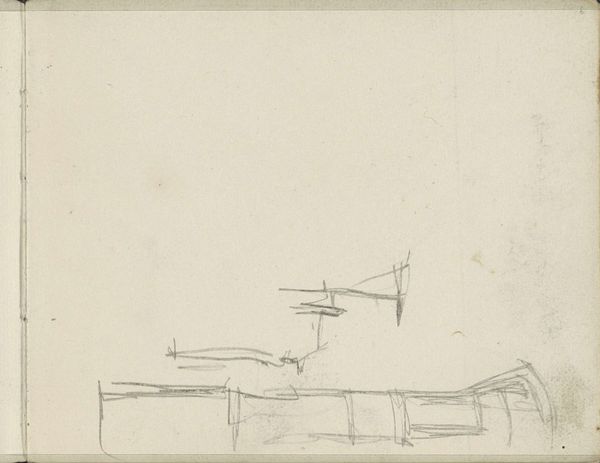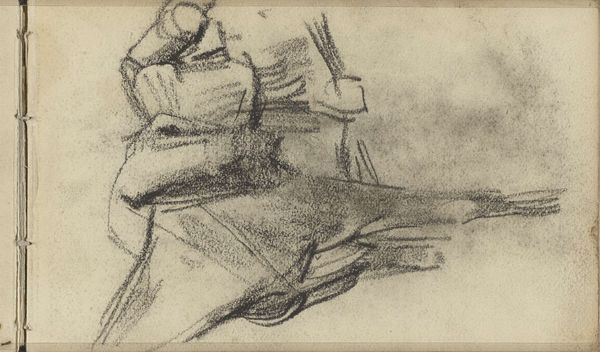
Copyright: Rijks Museum: Open Domain
Curator: We are looking at "Figuren op een kade" which translates to "Figures on a Quay," a pencil drawing made between 1893 and 1899 by George Hendrik Breitner. It's part of the Rijksmuseum's collection. Editor: Immediately, I'm struck by the sense of movement despite it being a static image. The loose lines give the figures a dynamic, almost fleeting quality. It reminds me of capturing a memory just as it starts to fade. Curator: That impression aligns with Breitner’s practice. He moved away from the traditional studio setting to capture street scenes of Amsterdam. His art became an unvarnished reflection of the urban experience. Editor: I see figures, perhaps dockworkers, but they are presented without idealization, rendered with rapid strokes, conveying weariness, which may carry an unspoken cultural weight for that period and milieu. Curator: Exactly. Breitner was drawn to capturing working-class life, especially scenes around the docks, depicting them as part of Amsterdam’s urban fabric. These quick sketches often served as studies for larger paintings. There's a debate, though, about how he positioned himself: as an engaged observer or a more detached documentarian. Editor: It is like visual note-taking with its sense of immediacy! Are there other symbols used by Breitner here that speak to labor, movement, or even the coming of the modern age? I see lines and angles but also round shapes like heads bowed from work. Curator: Beyond the generalized depiction of dockworkers as urban subjects, it's hard to extract any distinct symbolism beyond Breitner aligning himself with artistic and social circles valuing working-class representation. The real symbolism, I think, lies in the shift itself, making previously unrepresented lives visible in the art world. Editor: I see, it's more about what the scene represents within a broader historical narrative rather than a set of symbols with fixed meanings. It prompts consideration of societal and economic factors. Curator: Indeed, and also the developing identity of the art world at the time! He positioned himself in the contemporary moment, which required an entirely new visual language! Editor: A glimpse into another world that opens onto grander concepts! I was stuck at its lines, so now I will come away looking closer at the shapes themselves, like labor. Curator: Well, this particular drawing speaks about capturing reality without idealizing it or mythologizing it, an idea that transformed art as much as those very transformations of the world he drew!
Comments
No comments
Be the first to comment and join the conversation on the ultimate creative platform.


